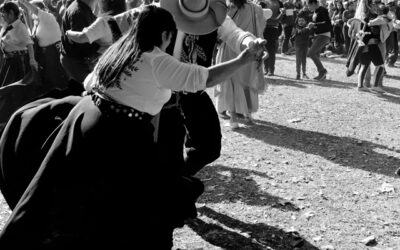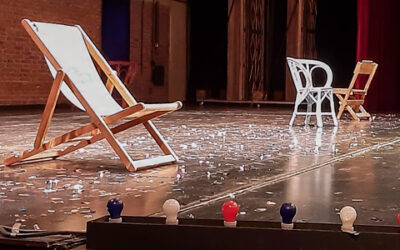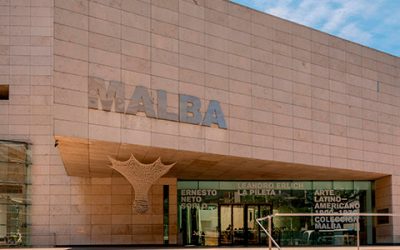Theatres in Buenos Aires
COMPLETE GUIDE TO THE MOST POPULAR AND RECOMMENDED ONESStage plays in the City of Buenos Aires are prestigious worldwide not only for the level of their productions but also for their settings and performances. The city offers great shows, and you’ll always find everything from classic plays to spectacular musicals.
Buenos Aires is popular for its active nightlife and its wide variety of cultural proposals. Corrientes Avenue, by far the main theatre district, is intimately tied to the brilliant Argentine performing arts.
With a variety of productions to enjoy with the whole family, the theatrical offerings in the Autonomous City of Buenos Aires are aimed at diverse audiences.
Many people believe that theatre has great transformative power, both for the performers and the audience. In this guide, we invite you to discover the most recognized theatre halls in the City of Buenos Aires and to dive into the world of its unique scene.
General San Martín Theatre
Considered one of the most prestigious theatres in the country, it has a central location near the Obelisk. About a million people visit it annually, and it has been a pillar of the theatre culture of Buenos Aires since its inauguration in 1960.
The San Martín on Corrientes Avenue is part of the iconic complex, General San Martín Cultural Centre. The place is not only the stage of theatrical performances and cinematographic works but also offers artistic exhibitions.
The San Martín has a surface of 30.000 m², distributed on 4 floors and 4 basements. The facilities include three theatre halls, a movie theatre, several rooms for exhibitions, and a gallery with photographic works.
From classical dramatic plays and experimental film cycles to being home for the stable Contemporary Ballet company and the Puppeteers Group, the San Martín Theatre is one of the main stages and cultural spots in Buenos Aires.
Corrientes Avenue 1530, Montserrat
Coliseum Theatre
Situated in the Retiro neighbourhood, opposite Plaza Libertad, the Teatro Coliseo stands out for its history and tradition.
The 1,700-capacity venue has a large orchestra pit, making it a place suitable for the presentation of operas.
The magnificent building is a plus for Coliseo’s remarkable musical history. Great icons of Argentine theatre and music have performed on stage: Les Luthiers, Luis Alberto Spinetta, and bands like Serú Giran and Sui Géneris, among other great artists.
At the end of the 60s, the independent record company Mandioca organised the first recitals under the name of “Beat Baires”. Every Sunday morning, it was in the Coliseum where the National Rock started to grow. Groups like Almendra, Manal, Vox Dei and Arco Iris performed there.
Some milestones in the Coliseo theatre: One of the most representative songs of that time was “Muchacha Ojos de Papel”, which was played for the first time on June 22, 1969, on the Coliseo stage; the place that also used to host circus shows until it became one of the most important lyric theatres in the city, with the rise of the opera. The first radio broadcast in Argentine history took place here on August 27, 1920.
The Teatro Coliseo is no doubt a mandatory stop on the theatrical tourism tour in the City of Buenos Aires.
Marcelo T. de Alvear 1125, Retiro
Apolo Theatre
One of the oldest theatres in Buenos Aires was founded in the year 1886 and opened its doors in 1892. Great stars such as Lola Membrives, Carlos Gardel, Enrique Santos Discépolo and Tita Merello, among others, have performed on its stage.
Apolo Theatre seats 494 spectators and an important list of authors, actors, directors, musicians and singers have performed on its stage. Since its opening, the theatre has received companies and performers of all genres: comedy, drama, musical shows, dances and payador counterpoints.
However, in its long history, the Apollo Theatre has had to close its doors and the original building that housed so many stars was demolished. Thanks to a National Law of 1959, that protected theatre hall buildings, the New Apolo was erected. In 1970 it was renamed Cine-Teatro Lorange and a series of new owners ran it, until in 2008 it became a family project and took its original name.
The Apolo Theater facilities and the eight floors of the building were restored, as well as the gallery entrance. King Lear was the reopening show, starring actors Alfredo Alcón, Joaquín Furriel, Juan Gil Navarro and Roberto Carnaghi, directed by Rubén Szuchmacher, and produced by Pablo Kompel and Adrián Suar, all of them recognised figures of Argentinian show business.
Corrientes Avenue 1372, Montserrat
Liceo Theatre
Located opposite Plaza Lorea, the Teatro Liceo is the most antique theatre in Argentina, recognized as a “Living Testimony of the City’s Memory” in 1986 by the City Museum.
Opened its doors in 1872 with the name “El Dorado”, and functioned under several names Goldoni, Progreso, Rivadavia, and Moderno until 1918. Great artists such as Luisa Vehil and Enrique Pinti have performed on its stage throughout history.
In 1993, like many other theatres in Buenos Aires, the Teatro Liceo was about to close. The company Multiteatro S.A., remodelled the space in 2006 restoring and preserving the original structure and materials.
Holding 575 spectators, the hall spread over a ground floor and 3 floors. You will find cabaret seats in the audience and balconies on the first and second floors.
Currently, the Liceo Theater hosts performances by great artists from the national scene within very diverse genres, and in the last decade, the management has decided to dedicate the room exclusively to musicals. Various seasons of Piaf, Casi Normales and Cabaret were three artistic events of great relevance in the billboard of Buenos Aires.
Rivadavia Avenue 1499, Congreso
Gran Rex Theatre
200 metres from the Obelisk, you’ll find The Gran Rex on Corrientes Avenue. One of the most relevant halls in Buenos Aires with great musical shows and national and international artists on stage.
With a seating capacity of 3,262 spectators since its inauguration in 1937, the Gran Rex represented a milestone in the history of modern Argentine architecture: its imposing façade with a glass surface allows you to see the interior of the building from the sidewalk.
Inspired by Radio City in New York, it represents a large shell divided into overlapping strips. Spectators can appreciate the shows from the three levels: stalls, the first balcony and the second balcony.
Nat King Cole, Los Plateros, Maurice Chevalier and Charles Aznavour have performed on its stage, as well as national musicians like Sandro and Palito Ortega.
The Grand Rex billboard offers musical spectacles for the whole family.
There is a curiosity about its history. It is said to be the result of a love and rivalry story with the family that built the Ópera theatre next to the Gran Rex building.
Corrientes Avenue 857, Montserrat
Cervantes National Theatre
Inaugurated on September 5, 1921, the Cervantes National Theatre is more than 100 years old and has had a great influence on Buenos Aires’ artistic scene.
The actress María Guerrero, a relevant figure in the culture of the time and her husband, the Spanish director and actor Fernando Díaz de Mendoza, promoted the creation of this iconic art centre
In 1933 the creation of the National Comedy Theatre was established by law, which would be housed in the Cervantes. Years later, in 1961, the building was destroyed by fire. Works of restoration and reconstruction allowed its reopening in 1968.
Three auditoriums make up the theatre: the María Guerrero – the main space of the theatre, with a capacity for 870 spectators –, the Orestes Caviglia Hall – smaller with 165 seats – and the Luisa Vehil Hall – a more intimate hall for 67 people, also known as the ‘Golden Room’ due to its ornamentation.
The Orestes Caviglia Room, which originally functioned as a cafeteria and bar, is special for chamber theatre and intimate plays, offering the audience a great proximity to the stage.
The Luisa Vehil seats adapt to the requirements of the show, conference or event presented there.
As a distinguished landmark, Cervantes National Theatre is a classic spot in your cultural tour in the City of Buenos Aires, always offering top-level productions.
Libertad 815, Montserrat
Opera Theatre
The Opera Theater has a history of more than 150 years being the first in the city to have gas lighting, an exceptional fact for the time. On May 25, 1872, the theatre opened its doors with the opera “Il. Trovatore.”
In addition to being one of the most emblematic cultural buildings in Buenos Aires, its Art Deco style and architecture make it stand out on Corrientes Avenue. The Opera has a capacity for 2,500 spectators, a versatile stage, along a large movie screen.
Numerous international artists have passed through the Opera: Ava Gardner, Édith Piaf, the Italian singer Mina Mazzini, the Folies Bergère, and Fairuz, among others.
After the remodelling in 1997, the Opera Theatre has been home to productions of great Broadway and West End musicals. Beauty and the Beast was the work chosen for its reopening, followed by Les Misérables, Chicago, The Phantom of the Opera, The Sound of Music, and Mamma Mia! And The Addams Family. Since then, this historic auditorium has been the stage for some of the most distinguished musical comedies in the City of Buenos Aires.
Corrientes Avenue 860, Montserrat
Avenida Theatre
With a capacity for 1,200 spectators, the Teatro Avenida was established in 1908, a few months after the Teatro Colón. It has always witnessed productions of Spanish zarzuela, flamenco, drama and opera companies.
In 1933, the Argentine actress Lola Membrives, who had a key role in the popularity of the Teatro Avenida, presented a production dedicated to the poet Federico García Lorca and initiated an artistic bond between Argentina and Spain: Avenida’s stage was the place for the Spanish author’s works. Due to the success of the cycle, the public demanded the presence of Lorca, who’d choose the Avenue Theatre for the world premiere of his play “La Casa de Bernarda Alba”, on March 8, 1945, by Margarita Xirgu.
In 1979, a fire in a neighbouring building caused the theatre facilities to collapse. After many years, the reopening in 1994 was celebrated with a Plácido Domingo concert together with the Madrid mezzo-soprano María José Montiel and the prestigious local performers Paula Almerares, Cecilia Díaz, the National Polyphonic Choir and the Buenos Aires Philharmonic Orchestra.
The Avenida Theatre occupies more than half of the block and has stalls, boxes and an elegant auditorium. The hall features empire-style decorations, a ceiling with geometrically ordered figures and artistically painted glass, which make a great visual spectacle with natural light.
Notable productions at this venue have included artists like La Argentinita, Enrique Borrás, Carmen Amaya, Lola Flores, Sara Montiel, Miguel de Molina, Alberto Closas, Raphael, Nati Mistral and Rocío Jurado, Tita Merello and Hugo del Carril.
Avenida de Mayo 1222, Monserrat
The Night of the Theatres
The Night of the Theatres is a special date on which theatres and performing spaces are open to the public. Once a year, independent theatre groups and venues in Buenos Aires offer their shows with free admission.
The project seeks to promote art and the contact of locals and tourists with theatrical productions, allowing people to appreciate the work of national artists.
On the Night of the Theatres, some auditoriums in Buenos Aires would also open their doors with promotional prices ranging from 60 to 90% off. The project includes guided tours along Corrientes Avenue and theatres on the official circuit.
Promotional tickets for the Night of the Theatres are available at Tickets Buenos Aires. Once at the box office of each venue, up to one hour before the show starts, you’ll get your pass by presenting an ID. It’s important to remember that capacity is limited.
The Charm of Argentine Theatre
Argentina stands out for its theatrical production. No trip to the city of Buenos Aires is complete without seeing one of the international-level performances. We hope this guide helps you on your theatrical tourist adventure through Buenos Aires.
Find the most recognised theatres in Buenos Aires on the map.
You might also enjoy these guide
Folklore Night in Buenos Aires
Many tourists visiting Argentina roam the capital in search of Tango shows, often unaware of the other traditional dances the country has to offer. Here, we reveal where you can enjoy the finest folklore performances in Buenos Aires so that you can indulge in an...
Top Cinemas in Buenos Aires
There's nothing better than escaping from reality for a while and going through the magic of cinema, do you agree? You'll find numerous picture houses in Buenos Aires, a Film-lovers city. Here are our picks of the best places in the city to be mesmerised by the big...
The Best Underground Theatre in Buenos Aires
The City of Buenos Aires has a wide offer in terms of theatrical shows or cultural spaces. Beyond the large marquees on Corrientes Avenue, we suggest you get to know alternative spaces of the Buenos Aires artistic scene, with independent proposals. Discover the best...
The Best Museums in Buenos Aires
Are you a fan of cultural tourism? If you are interested in learning about cultural heritage, attending notable exhibitions and enjoying artistic attractions, you are in the right place. Here we share a selection of the best Museums in Buenos Aires so you can immerse...



